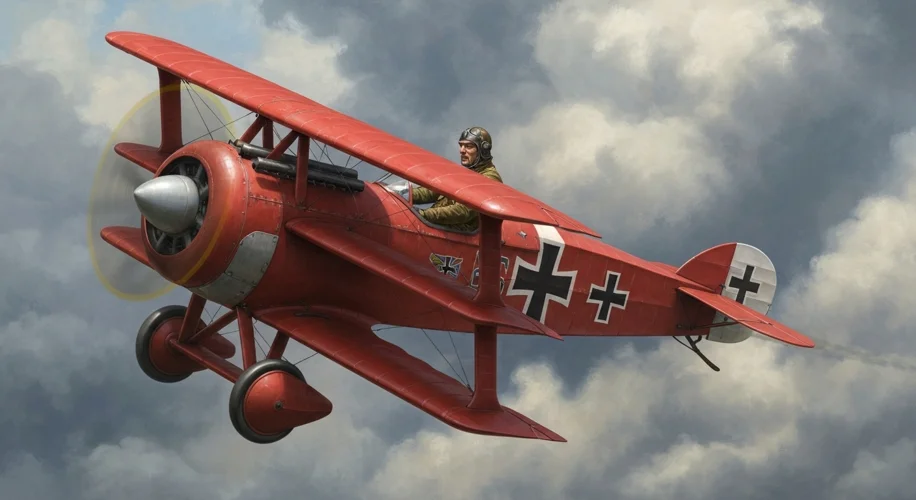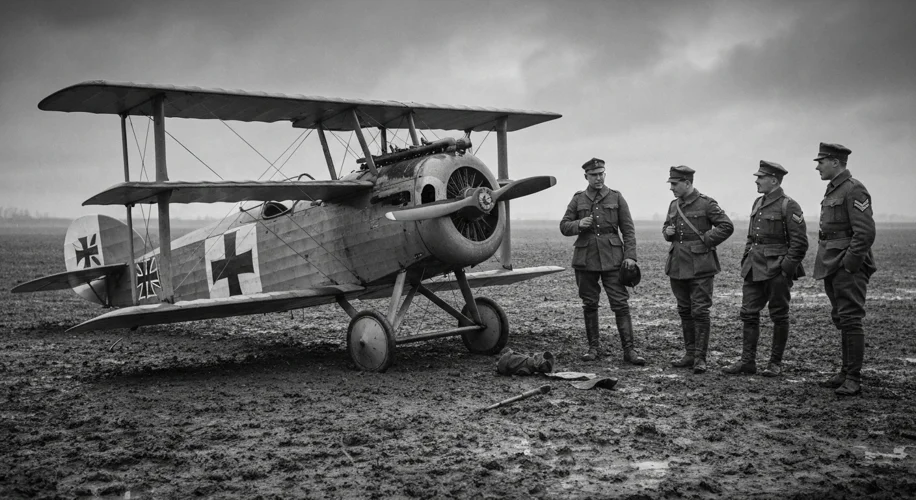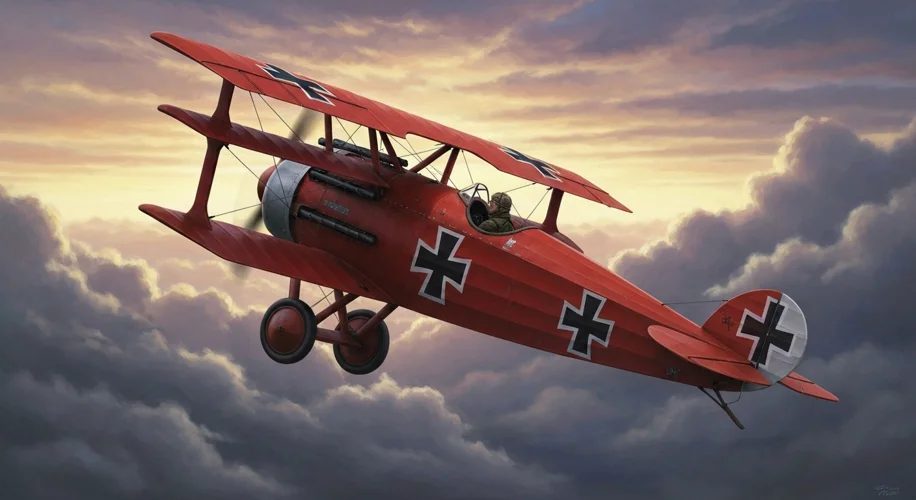The image of Manfred von Richthofen, the “Red Baron,” soaring through the skies of World War I in his crimson Fokker triplane, is as iconic as it is enduring. To many, he represents the romantic ideal of aerial combat: a chivalrous knight of the air, respected even by his enemies. But how much of this picture is painted by fact, and how much by the brushstrokes of propaganda and later romanticization? Was the “Red Baron” truly a universally admired figure, or is that a legend woven from the threads of war?
Born in 1892, Manfred Albrecht Freiherr von Richthofen was a product of Prussian aristocracy. His early life was steeped in the traditions of military service and a strong sense of duty. When the Great War erupted in 1914, Richthofen, like many of his class, answered the call to arms. His initial experiences were not in the air but on the ground, serving as a cavalryman. However, the static nature of trench warfare soon proved unsatisfying for the young officer. A pivotal moment arrived when he transferred to the fledgling German Air Service, known as the Luftstreitkräfte.
Richthofen’s early days as a pilot were marked by a steep learning curve. He was not an instant prodigy. His initial flights were observational, mapping enemy positions and directing artillery. It wasn’t until he met Oswald Boelcke, a leading German ace and tactician, that his potential truly began to bloom. Boelcke became his mentor, and under his tutelage, Richthofen learned the art of aerial combat, developing a keen sense for strategy and an almost preternatural ability to read the battlefield from above. The fateful decision to paint his Albatros D.II aircraft a striking red, a color that would become synonymous with him, was initially a practical measure to make his aircraft more visible to his own ground troops, a tactic common among early aces to distinguish friend from foe.

The legend of the Red Baron truly took flight after his tenth victory, when he ordered his Albatros biplane painted entirely red. This visually striking machine quickly made him a recognizable, and feared, figure among Allied pilots. He was not just a pilot; he was a symbol. His tally of victories mounted relentlessly: 20, 30, 50, and then beyond. By the spring of 1918, he had amassed an astonishing 80 confirmed kills, a record that dwarfed most of his contemporaries. He became the commander of Jagdgeschwader 1, a prestigious fighter wing that became known as the “Flying Circus” due to its colorful aircraft and mobile nature.
Richthofen’s approach to aerial combat was systematic and detached. He was a hunter, meticulously planning his attacks. He rarely engaged in dogfights for sport, preferring to ambush his prey from above and behind, using his superior aircraft and tactical acumen to end the fight quickly and decisively. His memoirs, Der rote Kampfflieger (The Red Fighter Pilot), though heavily edited for propaganda, reveal a complex individual, but one who viewed aerial combat as a deadly sport, a grim necessity of war. He was known for his strict adherence to rules of engagement, even going so far as to order his pilots not to attack downed aircraft or those in distress.
This perceived chivalry is often cited as evidence of Allied respect. British pilot Cecil Lewis, in his memoir Sagittarius Rising, described Richthofen as a “clean fighter,” and many pilots who faced him acknowledged his skill and courage. However, the reality on the front lines was far more brutal. The myth of the “gentleman’s duel in the sky” was a romanticized notion that often clashed with the desperate reality of war. While Richthofen might have adhered to a personal code of conduct, the overall aim was still to destroy the enemy. The propaganda machine on both sides amplified certain aspects of his persona, turning him into a larger-than-life character.

The “Red Baron’s” reign ended on April 21, 1918. While on a reconnaissance mission over Allied lines near Corbie, France, his triplane was attacked by Canadian pilot Wilfrid “Wop” May and his squadron. Richthofen engaged, but in the ensuing chaos, he was fatally shot by a single rifle bullet, likely fired by Australian ground troops of the 24th Machine Gun Battalion. He crashed behind enemy lines, his life tragically cut short at the age of 26.
The Allied response to his death was, paradoxically, one of respect. The Australians, recognizing the fallen ace, accorded him full military honors. His funeral was conducted with the solemnity befitting a fallen comrade, a stark contrast to the ferocity of the battles he had fought. This gesture, widely publicized, further cemented his image as a noble adversary.
However, the pervasive mythologizing of Richthofen, particularly in the post-war era, has obscured crucial aspects of his legacy. While his skill as a pilot is undeniable, the romanticized “knight of the air” narrative often overlooks the brutal realities of air warfare and the sheer destructive power of his kill count. His fame also served German propaganda, providing a heroic figurehead during a devastating conflict. Later narratives, fueled by books, films, and the enduring fascination with aerial combat, have continued to embellish the legend, often prioritizing the daring individual over the machinery of war and the broader geopolitical context.
Richthofen was undoubtedly a skilled pilot and a formidable adversary. He was a product of his time and his class, a warrior who excelled in the new and terrifying domain of aerial combat. The “Red Baron” remains a potent symbol of World War I aviation, but the reality is a complex tapestry woven from extraordinary skill, strategic brilliance, the grim necessities of war, and the enduring power of myth.

